Julia Cooper and Ian Duddle led a walk at Stanford Dingley on Wednesday 16 November. After heavy overnight rain and significant rain in the preceding days, the approach roads had many deep puddles. Then the clouds cleared and the sun shone for the first half of the walk. Meeting point was the church. Across the road, Rooks were putting on an aerial display and settling noisily in the tops of the trees at the edge of the field. A Grey Heron flew overhead. The walk started out northwards along the lane, with flowering Dogwood in the hedgerow a surprise for November. The route then followed a footpath north-westwards across two grassy pastures. There were extensive views to the south across the valley of the River Pang and up towards Bucklebury Common. The leaves on isolated hedgerow oaks were just beginning to change colour and they glowed yellow and green in the sunshine. White Snowy Waxcaps and a solitary Parasol Mushroom were found amongst the shorter grass and small inkcaps and numerous dung flies were seen on cowpats. A Buzzard circled above. The view to the north opened up, over an undulating grassy field and up to a line of broadleaved woodland, with dark conifers above on the skyline. Closer inspection revealed that a mystery plant in an adjacent field was a Thorn-apple. The walk continued along the edge of the next field between two rows of trees which marked a former sunken trackway. Three Giant Puffballs were well past their prime and Jelly Ear fungus was found on dead wood. On a previous walk, it had been estimated that the age of a magnificent hedgerow Oak was at least 300 years.
The next section of the walk was southwards through woodland along a track which followed the former route of the Yattendon to Stanford Dingley road. The trackway led between banks which were lined with old multi-stemmed trees, including Field Maple and both Wych Elm and suckering English Elm. Most of the leaves had already fallen from the Field Maples but the leaves on the elms were still green. In the woodland at the side of the track was an impressive line of big Trooping Funnel fungi. A large deep pit to the right of the track was thought to be a swallow hole. A pond higher up in the woods drains into the pit. Continuing along the track, a big Beech with gold and orange autumn leaves had a Hoof Fungus at its base. Flowering Bush Vetch was another unexpected sighting for November, as was flowering Holly later in the walk. On the left of the track, first an earthball, then a clump of Hare’s Ear fungus were found. A Tawny Funnel had crowded, deeply decurrent orange gills. A number of delicate white-gilled fungi were found on a fallen twig. Later inspection of the spores with a microscope confirmed their identification as Roundspored Oysterling Crepidotus cesatii. An Oakbug Milkcap had concentric rings of lighter and darker brown on its slightly depressed cap. A merulioid fungus, with folds rather than gills or pores on the underside, was identified as Netted Crust.
Leaving the woodland, the walk then followed the field edge down to Pangfield Farm. Amongst the farm buildings was an old granary on staddle stones. Two Pied Wagtails were foraging close to grazing horses in a field below the farmhouse. The route continued down to the Pang, then eastwards through a rushy pasture with grazing sheep, through a small damp copse and across a final grassy field to get back to the church at Stanford Dingley. Several Guelder-rose bushes in the hedgerow bordering the last field carried a heavy crop of waxy red berries. Afterwards, most of the group went to the Old Boot Inn for lunch.
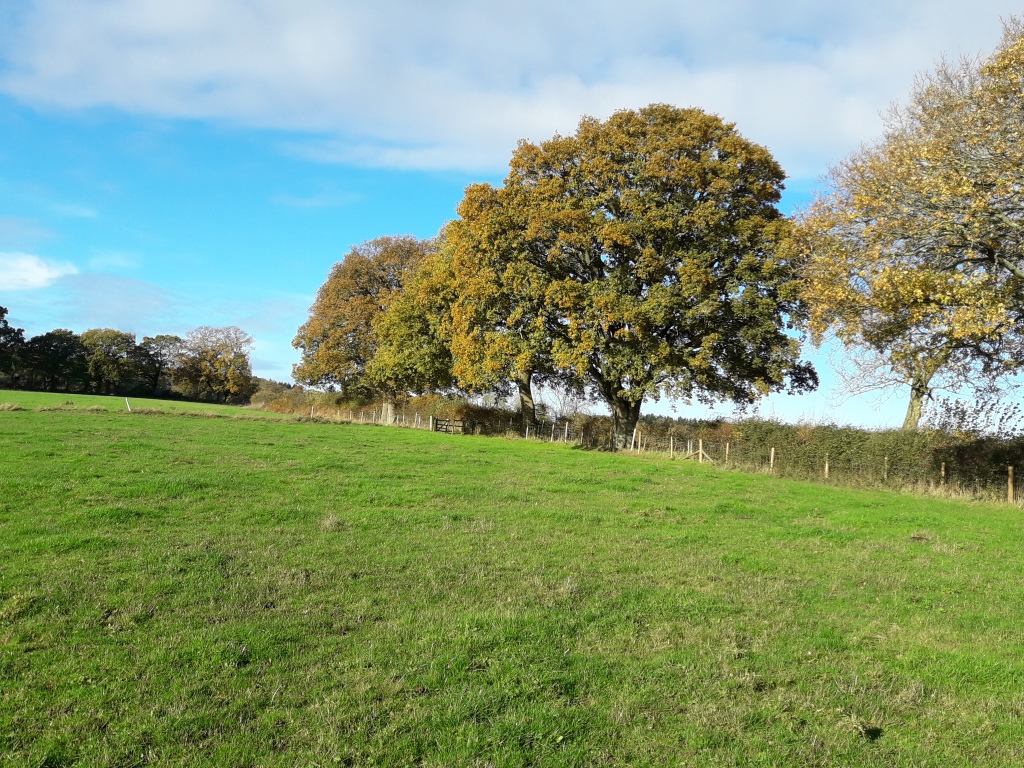
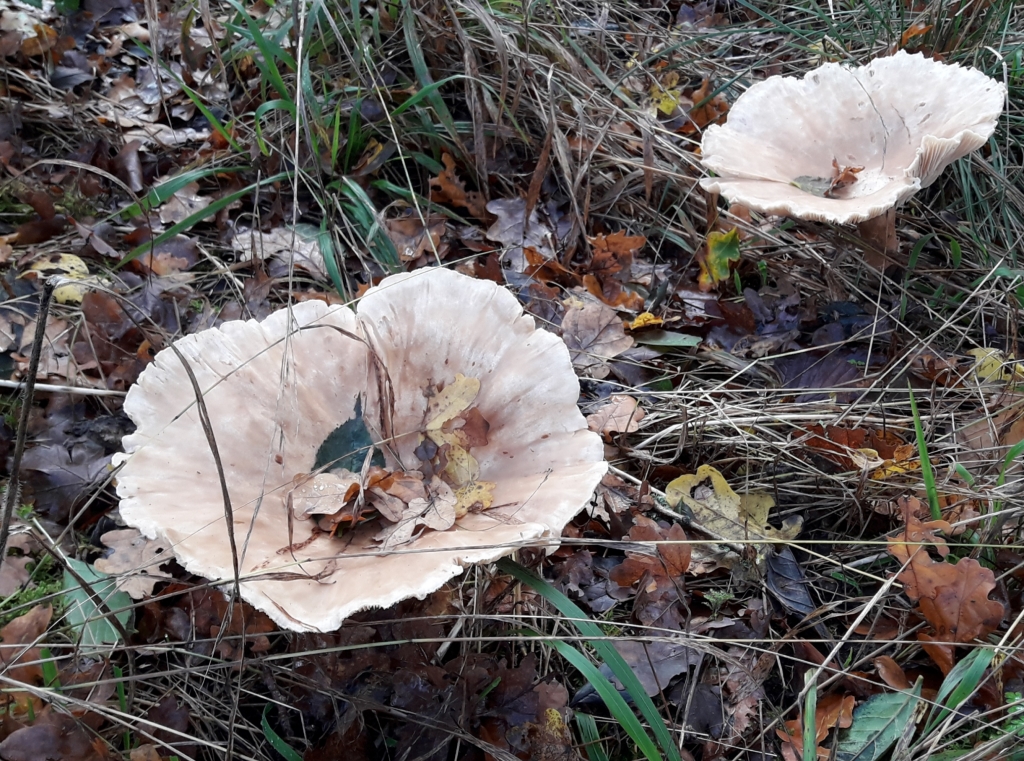
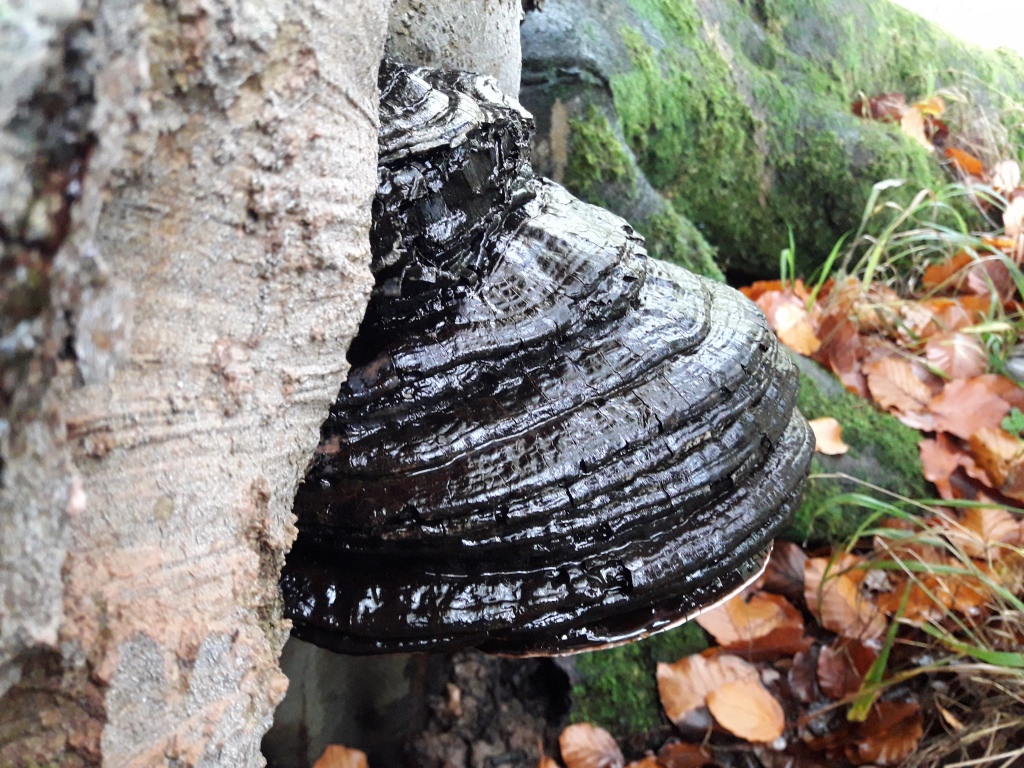
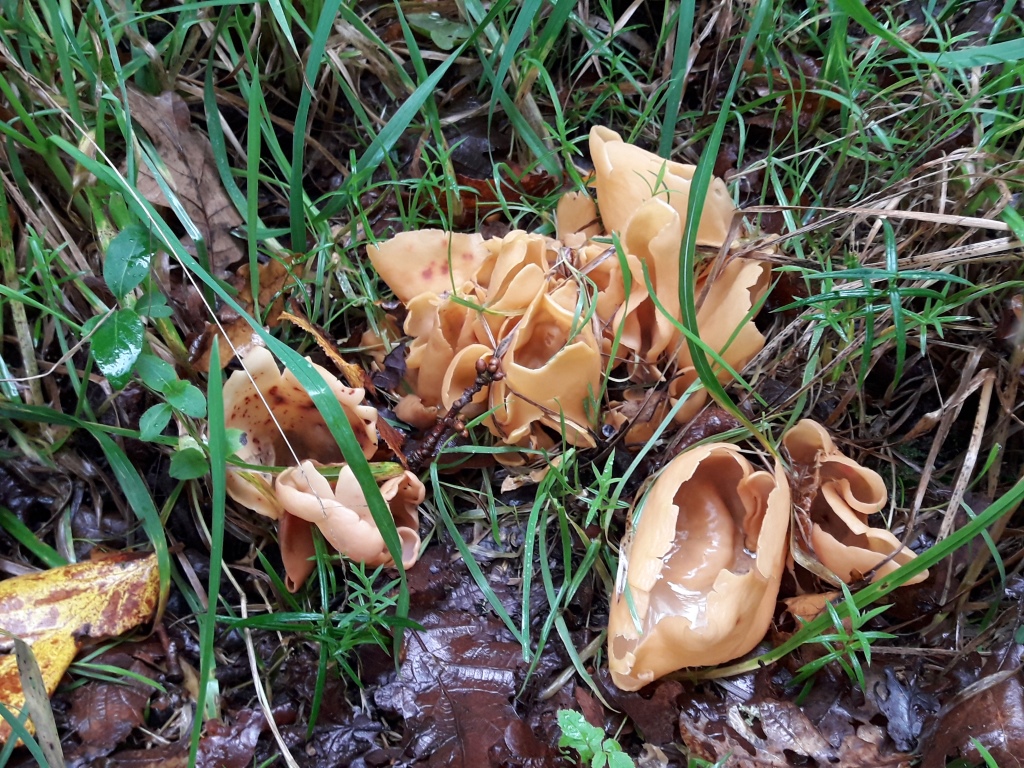
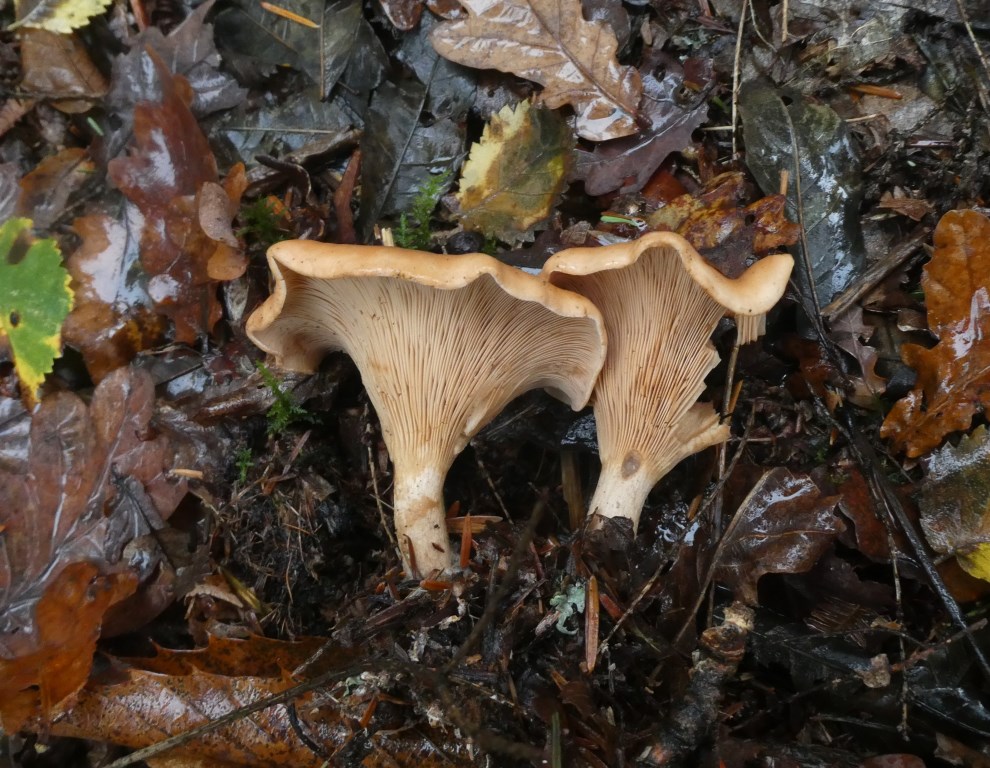
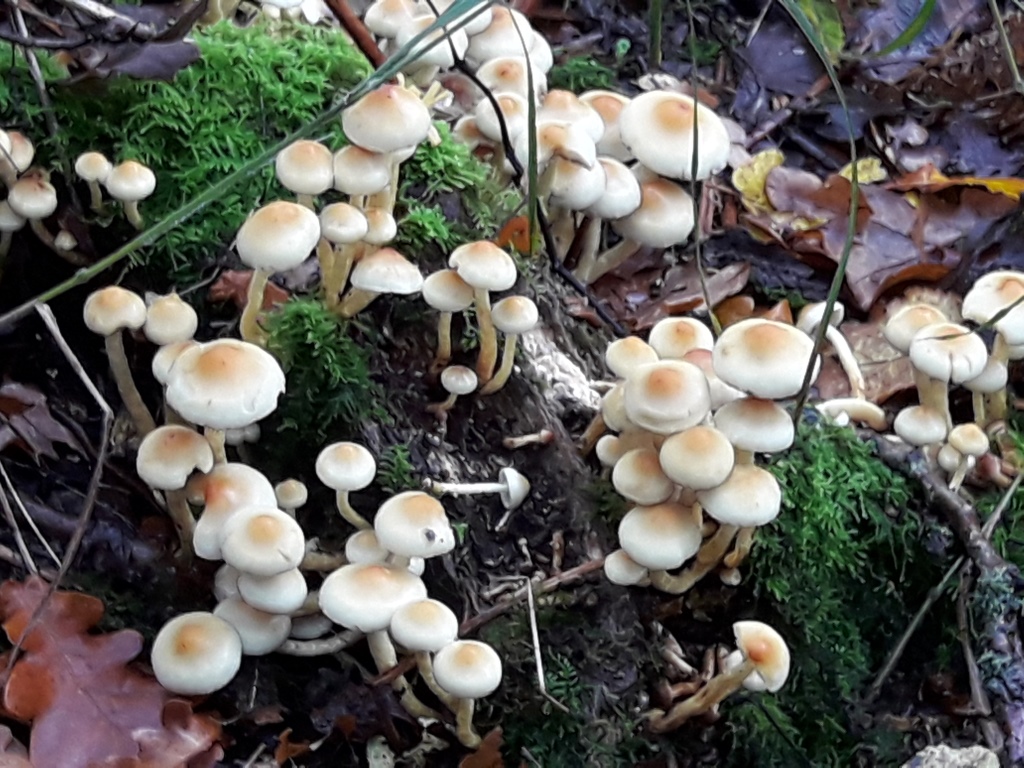
Pictures by Fiona Cummins and Jim Wills
